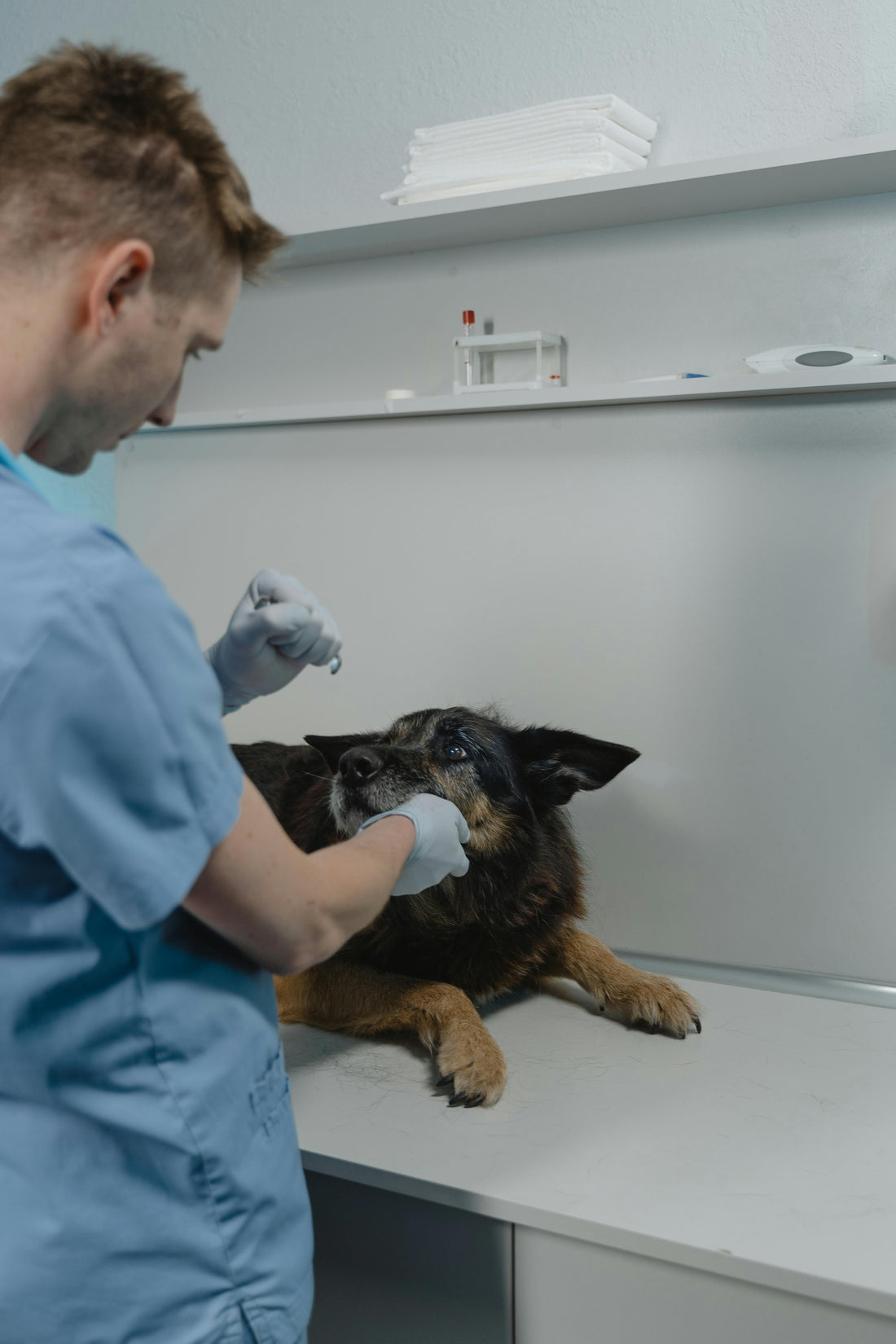
Essential Pet First Aid: What Every Pet Owner Should Know
Share
Pet First Aid: Essential Emergency Care for Dogs and Cats
As pet parents, we all hope we’ll never face a medical emergency with our furry companions. But accidents can happen anytime—whether it's a cut paw, a swallowed object, or an allergic reaction. Knowing how to react in those crucial first moments can save your pet’s life. That’s why understanding basic first aid for dogs and cats is so important.
First aid doesn’t replace professional veterinary care, but it helps you stabilize your pet and minimize harm until they can be seen by a vet. In this blog post, we’ll explore essential first aid steps, supplies to keep on hand, how to recognize an emergency, and tips for dealing with common situations.
Why Pet First Aid Matters
Every minute counts when your pet is in distress. Knowing how to react and what to do gives you the ability to:
– Keep minor injuries from becoming serious
– Reduce fear and panic in emergency situations
– Provide comfort and initial care for your pet
– Help your pet recover more quickly after the incident
Having this knowledge empowers you to act instead of panic—and gives your pet a better chance at a safe outcome.
What to Keep in a Pet First Aid Kit
A pet-specific first aid kit is a must-have in any home with dogs or cats. You can buy one pre-made or assemble your own.
Essentials to include:
– Gauze pads and rolls for dressing wounds
– Non-stick bandages
– Adhesive tape that’s safe for pets
– Antiseptic wipes or spray (chlorhexidine or betadine-based)
– A digital thermometer (rectal for pets)
– Blunt-tipped scissors
– Tweezers
– Saline solution for flushing wounds or eyes
– Hydrogen peroxide 3% (use only under vet instruction to induce vomiting)
– Styptic powder or pencil to stop bleeding
– Cotton balls or swabs
– Instant ice packs
– Disposable gloves
– A soft blanket or towel
– A muzzle (to prevent biting in painful situations)
– A flashlight
– Copies of your pet’s medical records and emergency contact info
Store the kit in an easy-to-reach place and regularly check expiration dates.
How to Recognize a Pet Emergency
Knowing the signs of a pet emergency can help you act quickly. These symptoms may indicate your pet needs immediate veterinary attention:
– Trouble breathing or persistent coughing
– Pale gums or tongue
– Sudden collapse or inability to stand
– Excessive bleeding
– Seizures or loss of consciousness
– Vomiting or diarrhea lasting more than 24 hours, especially if bloody
– Signs of pain: whimpering, restlessness, panting, limping
– Bloating or a distended abdomen
– Refusal to eat or drink for more than 24 hours
– Difficulty urinating or defecating
– Exposure to toxic substances or unknown chemicals
When in doubt, call your vet—better safe than sorry.
First Aid Tips for Common Emergencies
Knowing how to respond to specific incidents can make a huge difference. Here’s what to do in some common pet emergencies:
1. Bleeding or Cuts
– Muzzle your pet if they may bite due to pain
– Apply gentle pressure to the wound with clean gauze or a cloth
– Elevate the area if possible
– Use a bandage to secure the dressing
– If bleeding is heavy or doesn’t stop within 10 minutes, go to the vet immediately
2. Choking
– Carefully look inside your pet’s mouth if it’s safe to do so
– Don’t stick your fingers in blindly
– For small pets, hold them upside down and pat between the shoulder blades
– For larger pets, try the Heimlich maneuver: stand behind them, place your hands under their ribcage, and give upward abdominal thrusts
– Take them to a vet immediately even if the object comes out
3. Burns
– Run cool (not cold) water over the area
– Do not apply butter, creams, or ointments
– Cover the area loosely with a non-stick bandage
– See a vet as soon as possible, especially for electrical or chemical burns
4. Suspected Poisoning
– Try to identify what was ingested
– Do not induce vomiting unless instructed by a vet
– Bring the product packaging with you to the clinic if possible
– Go to your vet or emergency clinic immediately
5. Seizures
– Keep your pet safe from furniture or sharp objects
– Do not try to restrain them or put anything in their mouth
– Time the seizure
– After the seizure, keep your pet calm and quiet
– Contact your vet as soon as possible
6. Heatstroke
– Move your pet to a shaded or air-conditioned space
– Offer small amounts of cool water
– Wet towels and place them on the paws, underarms, and neck
– Use a fan if possible to help cool them
– Head to the vet immediately—heatstroke can be fatal
7. Eye Injuries
– Avoid touching or rubbing the eye
– Flush gently with saline solution if needed
– Cover the eye loosely and see a vet right away
Transporting Your Pet in an Emergency
Handling your pet carefully during transport is just as important as administering first aid. Here’s how to do it safely:
– Remain calm to avoid further distressing your pet
– Use a pet carrier for cats or small dogs
– For large dogs, gently place them on a blanket or board to carry them
– Avoid sudden movements and support their body as much as possible
– If you can, call your vet ahead of arrival so they’re ready
Preventive Steps That Save Lives
A few proactive habits can go a long way in reducing emergency risks:
– Keep cleaning products, medications, and human food out of reach
– Secure electrical cords and sharp objects
– Supervise your pet outdoors or in unfamiliar environments
– Maintain regular vet check-ups and vaccinations
– Know your pet’s normal vital signs and behaviors so you can spot problems early
– Take a pet first aid and CPR course through a local shelter, vet office, or online provider
First Aid vs. Veterinary Care
Even if your pet seems fine after an incident, always follow up with your veterinarian. Many injuries or toxic exposures don’t show symptoms right away but can become serious over time.
First aid is just the first step—your vet will assess the full situation and provide treatment that may not be visible to the untrained eye.
Final Thoughts: Stay Prepared and Stay Calm
Emergencies can be scary, but preparation makes all the difference. With a pet first aid kit, some basic training, and a calm mindset, you’ll be able to help your pet safely through many common health crises.
Every minute counts in an emergency. By knowing what to do, you’re not just reacting—you’re giving your beloved pet the best possible chance at recovery.
📘 Want more expert pet care tips? Download "First Aid Handbook For Dogs And Cats" for comprehensive, vet-backed advice you can trust.
